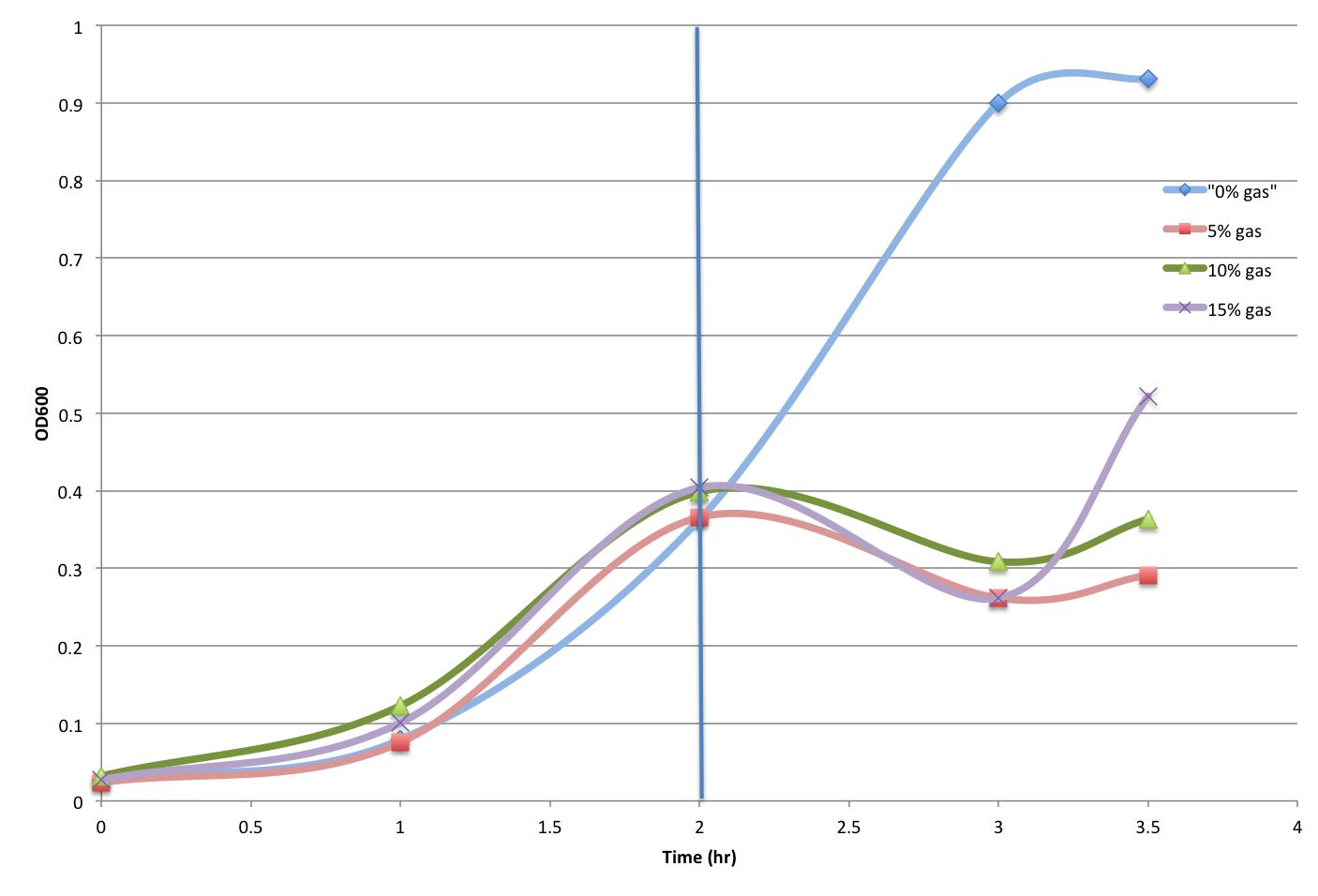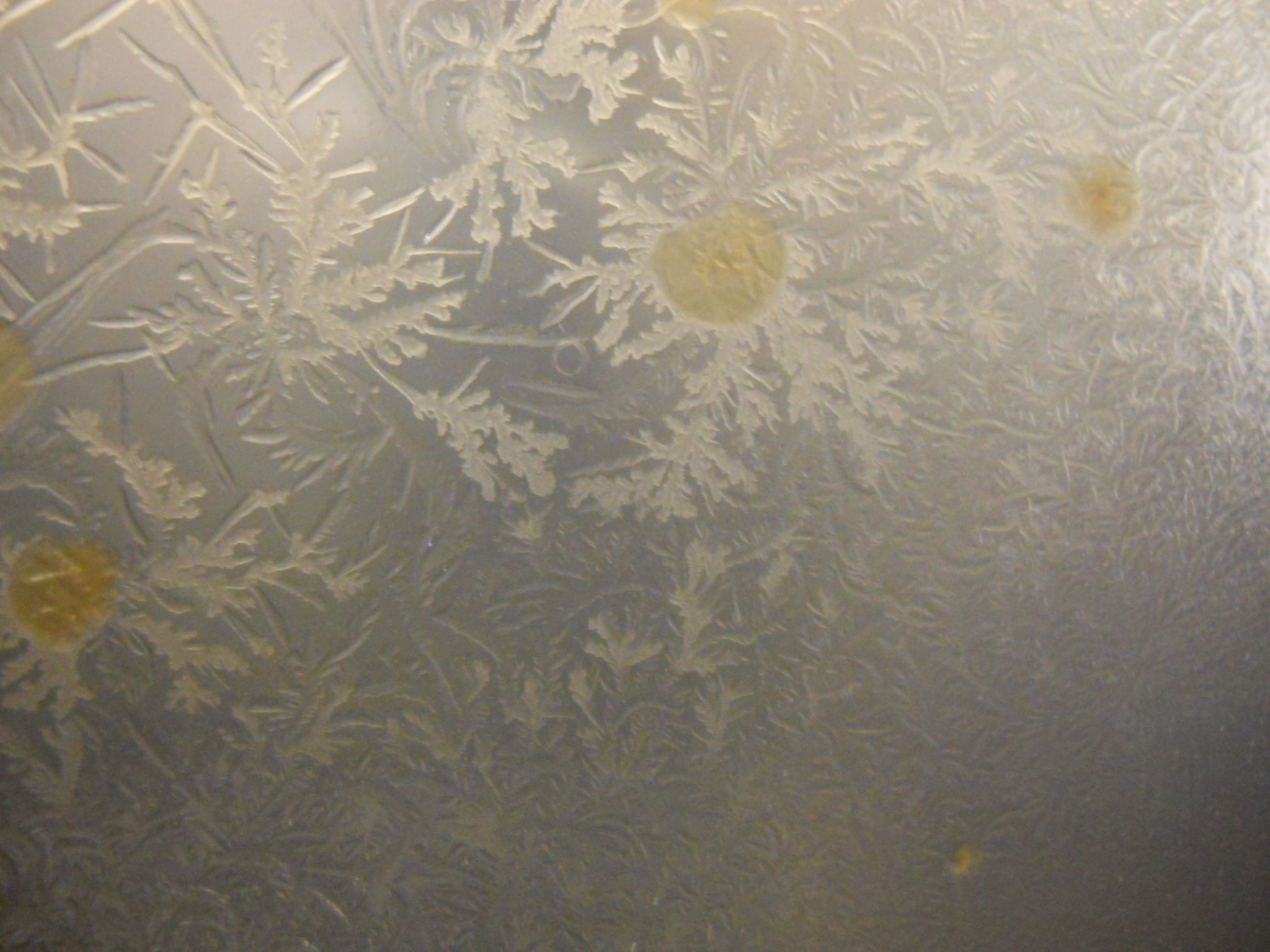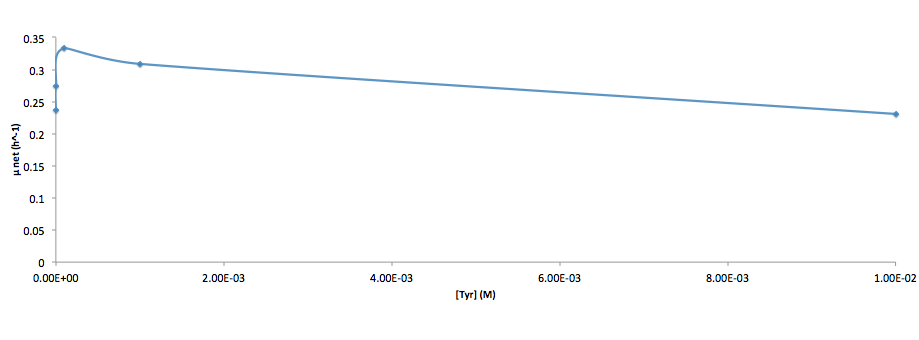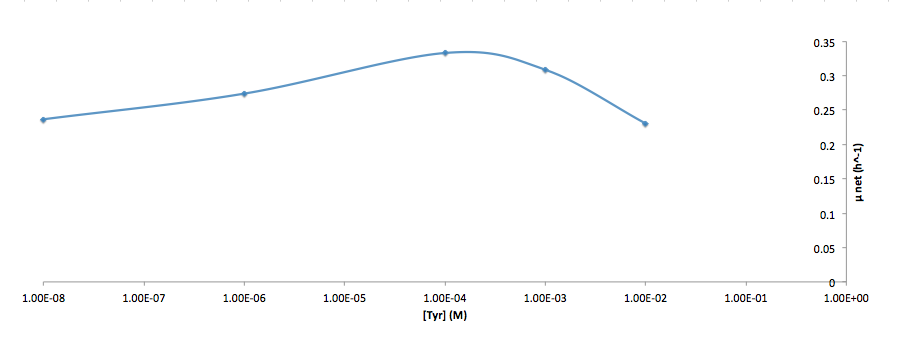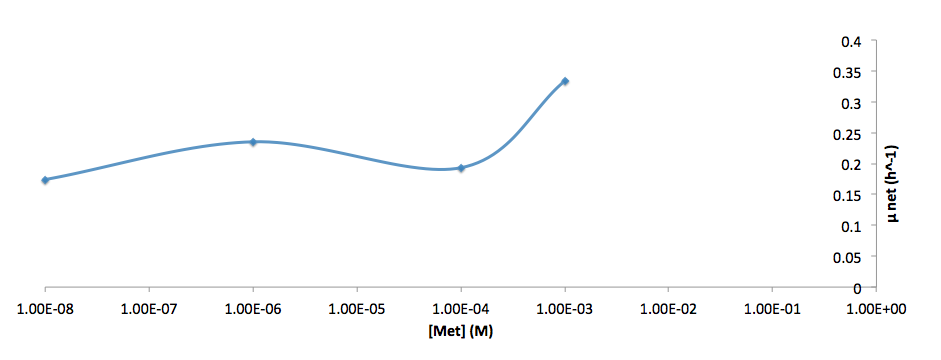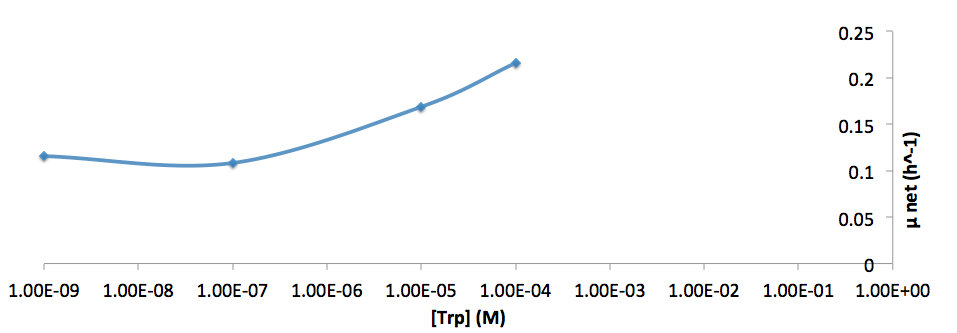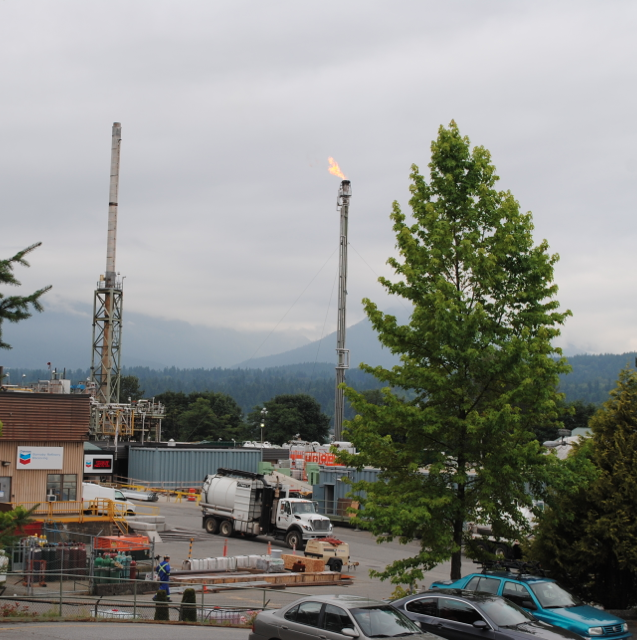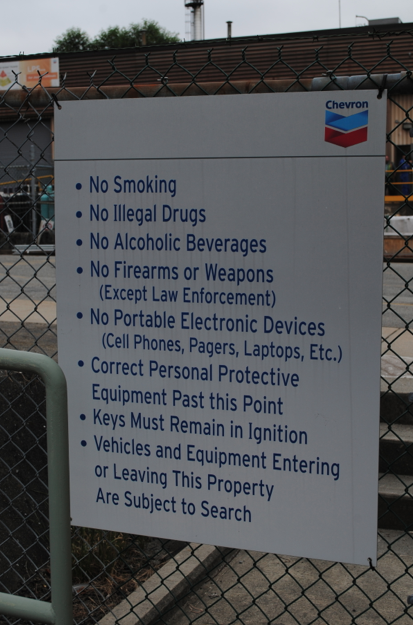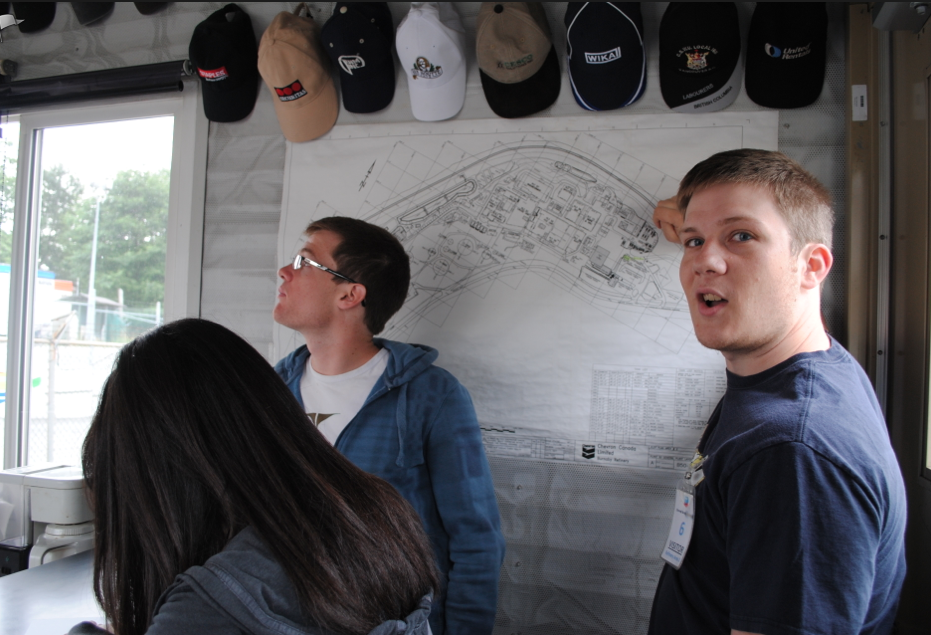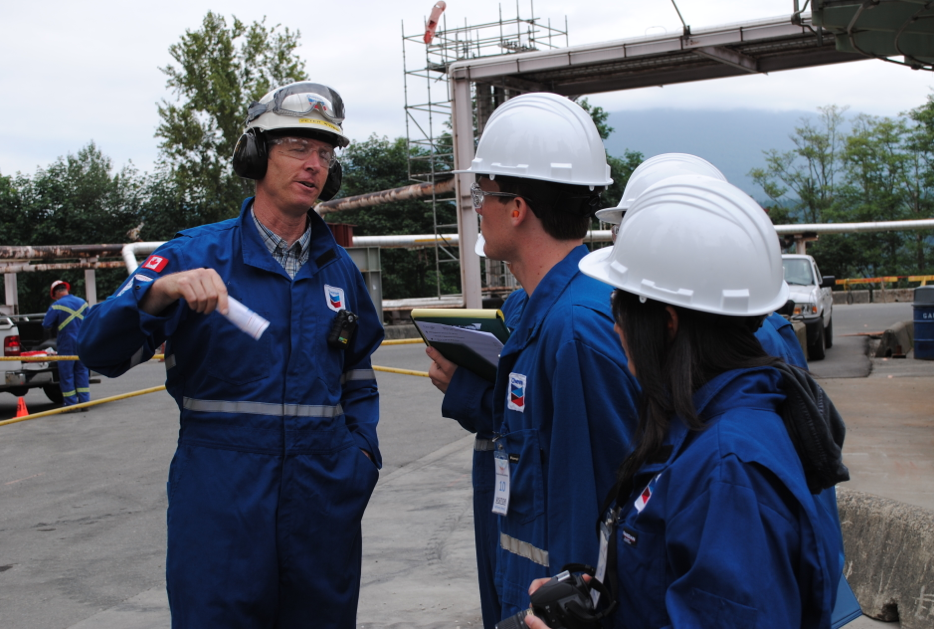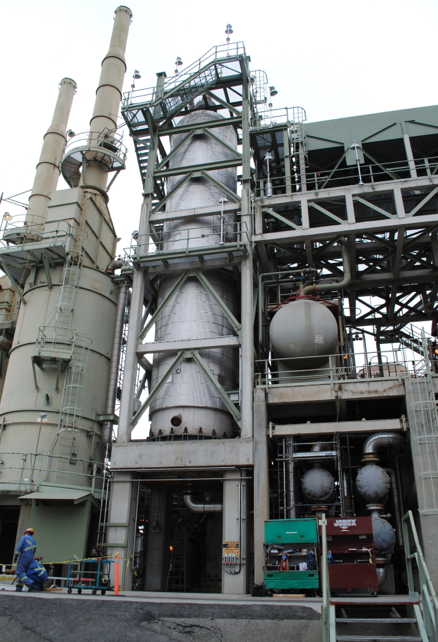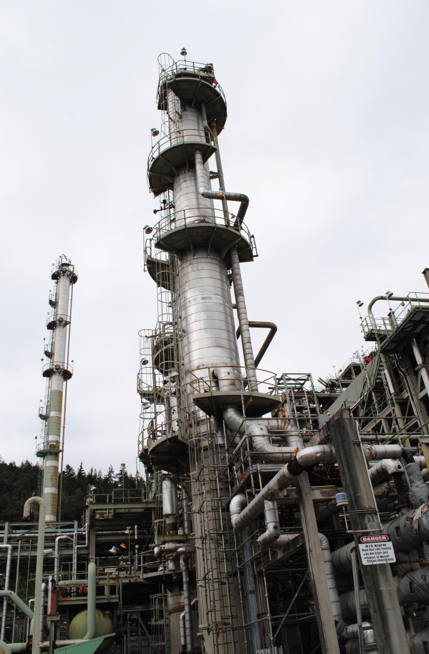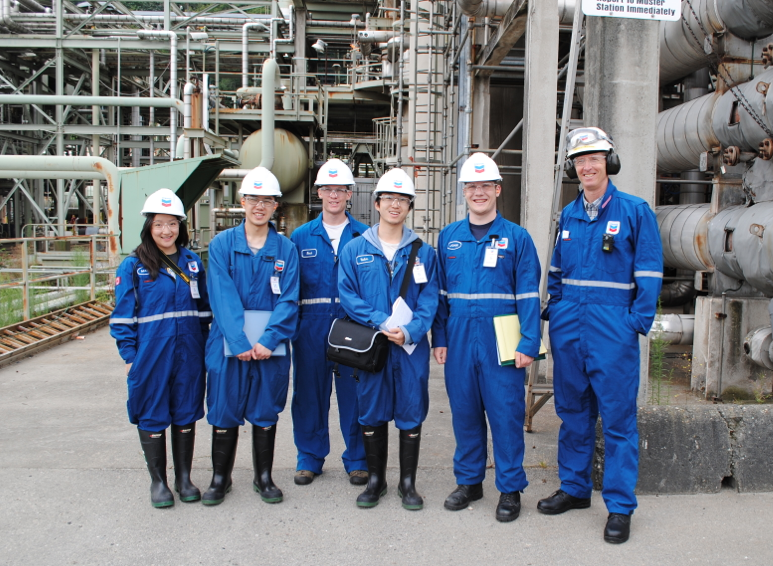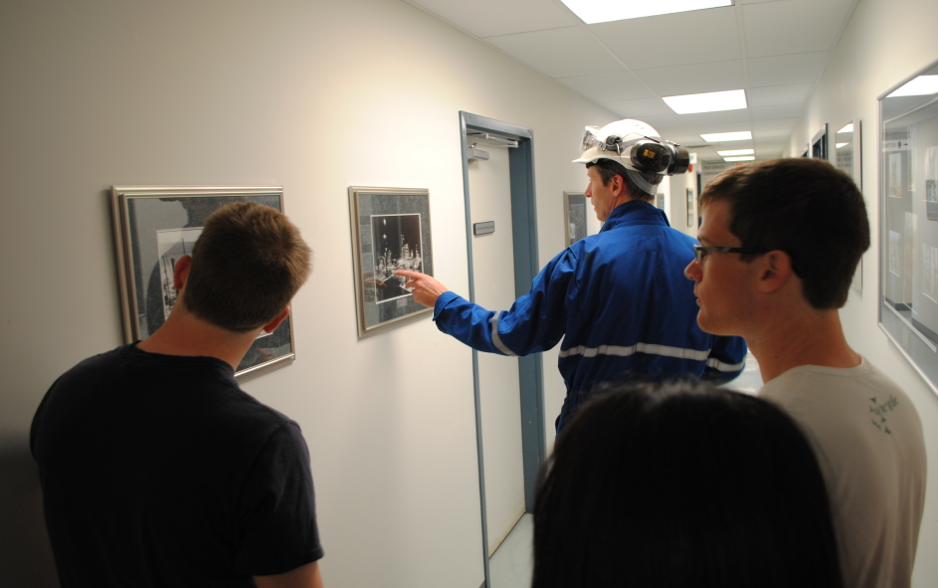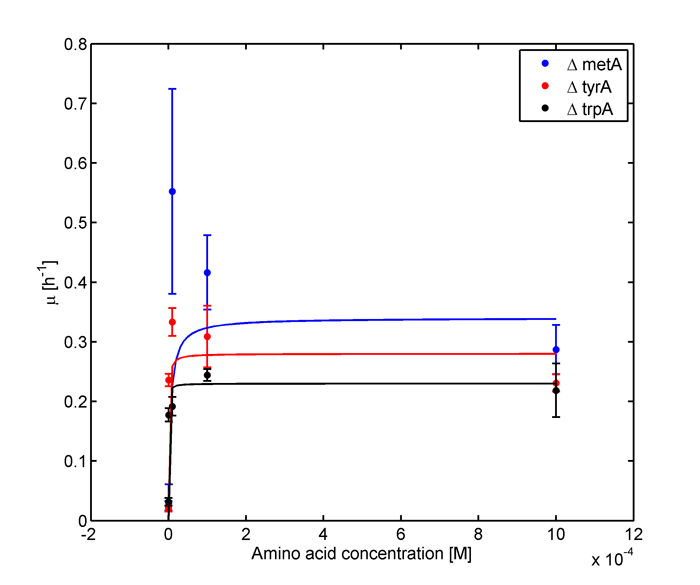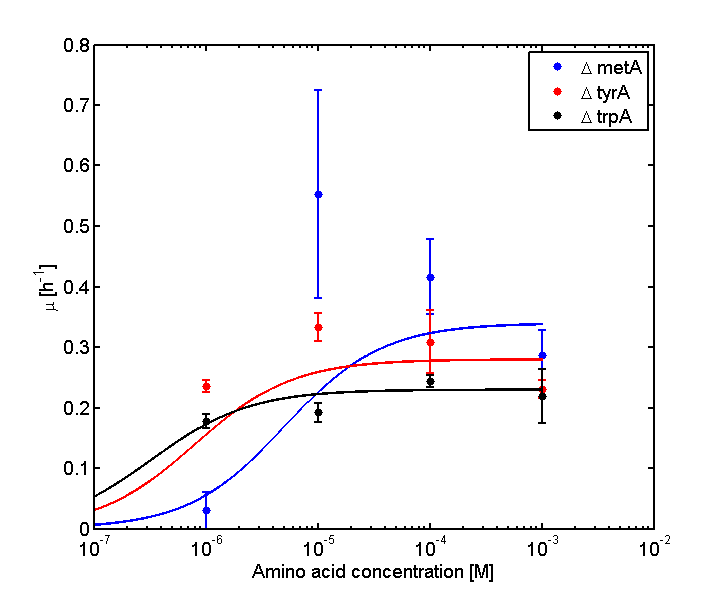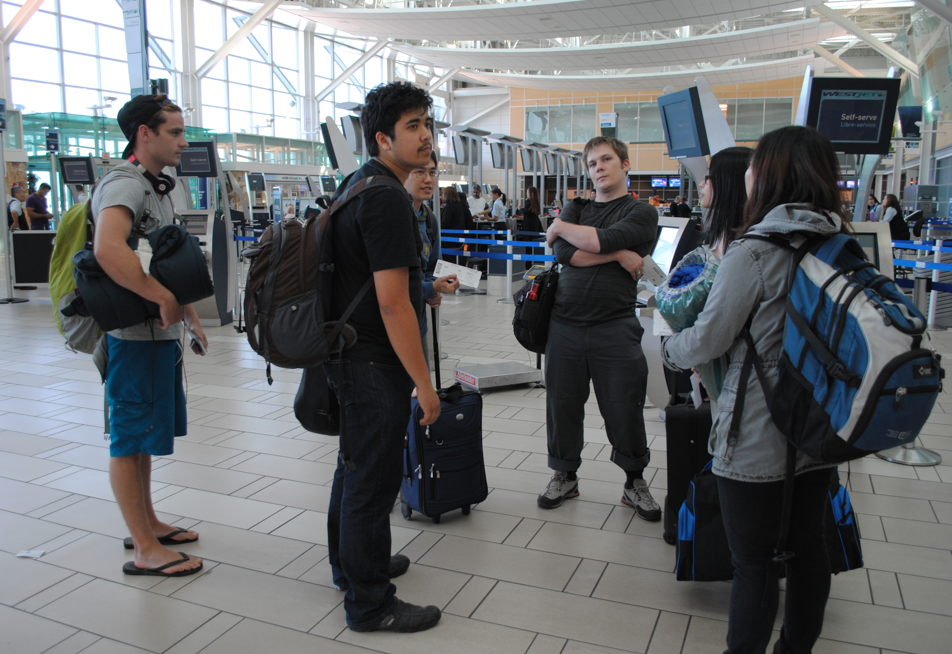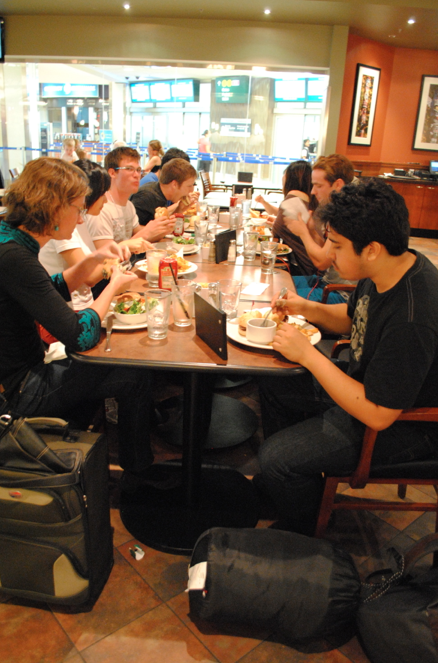Team:British Columbia/DSZNotebook
From 2012.igem.org

June 8
Tried to make more EPI300 cells, though no obvious growth even after hours for the second time, and decided to leave it over night to see if there are any changes.
Electrophoresed K12 with PIJ790 plasmid, and plated them on Chlor plates with control plates to examine the plates.
- Ruichen
Prepared a 96 well plate for co-culture experiments with the the following ratios:
| GFP | RFP | YFP | 0.5G/0.5R | O.67G/0.33R | 0.33G/0.67R | 0.5G/0.5Y | O.67G/0.33Y | 0.33G/0.67Y | 0.5R/0.5Y | O.67R/0.33Y | 0.33R/0.67Y | ||
| GFP | RFP | YFP | 0.5G/0.5R | O.67G/0.33R | 0.33G/0.67R | 0.5G/0.5Y | O.67G/0.33Y | 0.33G/0.67Y | 0.5R/0.5Y | O.67R/0.33Y | 0.33R/0.67Y | ||
| GFP | RFP | YFP | 0.5G/0.5R | O.67G/0.33R | 0.33G/0.67R | 0.5G/0.5Y | O.67G/0.33Y | 0.33G/0.67Y | 0.5R/0.5Y | O.67R/0.33Y | 0.33R/0.67Y | ||
| 0.33G,R,Y | 0.33G,R,Y | 0.33G,R,Y | |||||||||||
| Media | Media | Media |
All cells were derived from EPI300, and were grown in M9 media to allow for accurate OD measurements. a total of 10 uL culture in each case was added to 190 uL M9 media.
However, the plate reader was later found to be broken. The plate was placed in the 4° cold room until such time that the experiment could be done.
The wells were plated by GFP first, then RFP, the YFP. There was a slight accident that involved losing some of the YFP culture, but enough was recovered to fill the plates. It is likely that the GFP cultures spent over 30 minutes in the plate before the YFP was added, so some readings may not accurately reflect the ratios shown above.
-Jacob
Miniprepped biobricks 12O, 5P, 17F, 13M, 14N, 14E using the QIAGEN Spin Miniprep Kit provided by the Hallam lab. We had planned to miniprep 7B also, but a slight accident caused there to be less than 1.5 mL in the microcentrifuge tube. It will be done sometime later, after regrowing a culture
-grace
June 9
The EPI300 did grow! though over grew, and was discarded.
- Ruichen
Bought $1 of 91 octane (no ethanol) gas from the Shell on 10th. It's in a red jerrycan in the flammables cabinet near our bench.
JohnHenry 14:31, 9 June 2012 (CDT)
Experiment plan for week of June 10-16th:
1) Kill Switch Assay for Colicin E7, Colicin E2, BamH1, H2O2
Colicin E7: There is currently a plate of K12 cells with protein immunity and Colicin E7. Lysis protein (cuts the immunity gene to allow for Colicin E7 production) will be transformed into K12 (Sat). Cultures will be set up for both the protein immunity+Colicin E7 and the Lysis (Sun). The two cultures will be mixed and grown up to correct OD then plated (Mon). Plates will be checked for growth (Tues).
Colicin E2, BamH1, H2O2: There are currently plates of K12 cells with Colicin E2 and H2O2s. Colonies will be picked and cultures will be set up for each of these (Sat). The cultures will be grown to correct OD and induced then plated (Sun). Colicin E2 is induced low concentration of ampicillin, BamH1 is induced with arabinose, and H2O2 is induced with 2nM of AHL. Plates will be checked for growth (Mon). BamH1 will be transformed into K12 cells and plated (Sat). Same steps will be taken as above and plates will be checked for growth (Tues).
2) Solvent Tolerance Assay
Cultures of K12 cells with 3I plasmid will be set up (9am on Sun) in gasoline and pentane. OD will be checked every hour for 12 hours or less until stable phase (Sun). Protocol is on the TU Delft 2010 page [1].
3) PCR RFP, YFP, GFP on to pcc1 fosmid
There will be a PCR tutorial on Thursday 6pm with the primers for putting the RFP, YFP, and GFP from the biobrick on to pcc1 fosmids.
- Marianne
Started some cultures and plates for a few kill switches on the registry that could be immediately assayed. The cultures were of a H2O2 producing strain, and another strain that expressed the colicin E2 operon, which is inducible under low (10 uG/mL) concentrations of B-lactam antibiotics, such as ampicillin (http://www.sciencemag.org/content/305/5690/1629.full#F2). - Jacob
June 11
Autoclaved 4 500ml LB, bottle of 10% glycerol and 1 bottle of water.
-Ruichen
Started kill switch assays on colicin E2 and BamHI. Colicin E2 is on the SOS promoter, which is best switched on by mitomycin. However, we currently do not have access to mitomycin or any of its closely related derivatives, so, judging by the previously mentioned paper, we induced with b-lactam antibiotics in low concentrations.
Procedure outline: Dilute 1:100 22A, 3C and wt strains in 25 mL LB. Measure OD every hour. At start of exponential phase, add arabinose to 0.01% or amp to 4 ug/mL to strain+control. Plate 25 uL 2 hours later, mid exponential phase. Details to follow.
-Jacob
Transformed biobricks 7C, 22C, and 20K into K12, 8G into BL21 pIJ790, 7C into EPI300 pIJ790, and 14C into DH5α pIJ790 for miniprep. After recovery, the cells were plated in the following manner: 22C and 20K on LB + Kan, 14C and 8G on LB + Amp, and 7C (both the K12 and EPI300 cells) on LB + Chlor. Different cells were chosen to test out the newly made competent cells. Only the K12 cells have been verified. 7C was transformed into K12 after, in addition to EPI300 pIJ790, because the 7C biobrick has Chlor resistance, which mimics the marker on pIJ790.
Quantified previously miniprepped biobricks using the nanodrop spectrophotometer.
Tested the mini-prepped plasmid concentration (using water as water)
3-13M: 43.1 ng/µl
1-5P: 111.4ng/µl
5-12O: 67.2ng/µl
7B: 70.2ng/µl
2-17F: 25.1ng/µl
3-14E: 84.9 ng/µl (260/280:1.82, 260/230:2.13)
2-14N: 223.8ng/µl (260/280: 1.83, 260/230: 2.21)
-Ruichen
June 12
Checked plates from Jacob's June 11 kill switch assay. Every single plate (3C+, 3C-, 22A+, and 22A- in both 5 uL and 10 uL plating quantities) grew a lawn. Only 3C+ and 3C- plates had a few distinguishable colonies.
Checked plates of the cells transformed on June 11 by Ting-Chia and started 3 mL cultures for miniprepping. Only the DH5α pIJ790 and EPI300 pIJ790 transformed with the 14C and 7C biobricks, respectively, did not seem show any growth upon the first check. It was unclear as to whether there were actually any 7C (EPI300 pIJ790) colonies growing, so both plates were returned to the 37ºC room to incubate. For the other plates that did show growth, single colonies were picked and inoculated in 3 mL starter cultures for miniprep.
QIAprep Miniprep kit from Qiagen was used to miniprep 4-3I, 2-3C, and 3-22A. The cells used were previously inoculated cultures that were stored at 4ºC. DNA product was stored in sterile dH2O and frozen in the -20ºC freezer.
We received plates of Rhodococcus sp. strain JVH1, Rhodococcus rhodochrous IGTS8 (ATCC 53968), and Baillus sphaericus IGTS9 (ATCC 53969). Single colonies were picked and inoculated in 3 mL LB at 37ºC at first. Plates were then parafilm-sealed and stored at 4ºC.
After 20 hours at 37ºC, the plates with 14C and 7C (EPI300 pIJ790) had colonies. 14C only had one colony, while 7C had a couple of small colonies. The origins of the colonies were uncertain, so the plates were discarded and the cells will be transformed in K12 the next day. Also, 13M biobrick (RFP gene), which has been verified, will be transformed into EPI300 pIJ790 and DH5α IJ790 to check if the competent cells are working properly or if they are to blame for the failed 14C and 7C plates.
Acquired trp, tyr, met, and arg for use in our co-culture experiments.
June 13
Removed 3 mL overnight cultures (20K, 7C, 8G, and 22C) from the 37ºC room and stored them at 4ºC until they are miniprepped.
Discovered a thing Joe is too cool to do:
Update the wiki.
June 14
Transformed the remaining interesting kill switches without promoters into K12. Also transformed 17F into EPI300 pIJ790 and DH5α pIJ790 cells to determine if previously failed plates were due to ineffective competent cells. All transformed cultures were then plated onto appropriate antibiotic plates (+Amp or +Kan), along with a control for each. An extra control plate was spread onto a Chlor plate from a batch that previously produced unclear results. The plates were placed at 37ºC at noon and left them to grow overnight.
Made fresh batch of LB + Amp plates, which were used for half the Amp resistant samples from above. Check control plate tomorrow for colonies to ensure plates work.
Grew two 250 mL cultures of EPI300 to make into competent cells. Iced them when OD600 reached 0.34 and 0.30. Finished glycerol stocks were stored in new freezer box "iGEM 2012 Comp Cells."
Grace mini-prepped:
- 20K (in K12)
- 7C (in K12)
- 8G (in K12)
- 22C (in BL21 w/ plasmid pIJ790)
Ting:More EPI300 competent cells made. Need to verify competency tomorrow.
PCR Party held in the evening to start PCR experiments. PCR programmed to run overnight at keep products chilled at 4ºC until tomorrow, when gels will be ran. - Tingchiawong
Ruichen's Protocols learned for PCR:
1. get PCR tubes
2.get all reagents (except for pfu)
3. make master mix, in centrifuge tube
4. aliquot into PCR tubes (Master Mix)
5. add into the remaining reagents, except the pfu (normally jus the enzyme, and when colony PCR, pick a colony in stead of adding DNA).
6. keep sterile, pick colony (using tips, 10µl), add into tubes
7. add pfu
8. set up reaction conditions
- Ruichen
June 15
1)Made 1 liter's worth of Kan plates, and about 3/4 liter's worth of chlor plates. Noting that the kan plates that we used previously often grew colonies for negative controls, we increased the amount of kan stock we added from 1 mL to 1.5 mL. We have confirmed that it is lethal to normal cells by the fact that nothing grew on the negative test for the epi300 cells that Ting recently made.
2)Tested epi300 cells by transforming with the rfp cassette for easy identification of whether or not the transformation was actually successful. Negative controls were also employed for the newly made plates.
- Update: many colonies on the rfp plate, but none on the negative controls. The transformation efficiency appears to be slightly lower than previous competent cells, but is still fairly high.
3)Miniprepped the resistance cassette colonies. Previously, to do the PCR, we just picked a colony, but we thought that it would be beneficial to have a plasmid stock in case we needed to repeat the PCR.
4)PCR with new (biobrick) primers was attempted. We received most of the primers for the Dsz genes and also for the amino acid genes. We performed a PCR, and ran the results on the gel.
5) We attempted to do a solvent tolerance assay, but stopped half way through.
6)Ran the gel. Below are the results from yesterday's and today's PCR. Cameron made the gel and taped the edges of the gel box to prevent the gel from escaping. The gel itself was made to 1% agarose in 0.5% TBE, and run on a 50 well gel box. 3 uL of loading buffer were used for 8 uL (10 uL for yesterday's products) sample to increase contrast, and various ladders were tested. The negative control for today's PCR popped open during the reaction, and evaporated.
Running a gel
- Broad Range Ladder
- TrpA (biobricks)+DMSO
- TrpA
- TrpB +DMSO
- TrpB
- ArgC +DMSO
- ArgC
- ArgE +DMSO
- ArgE
- MetA +DMSO
- MetA
- TyrA +DMSO
- TyrA
- empty
- 1kb ladder
- Mehul's Stuff metA p1002 Kan
- Mehul's Stuff metA p1002 Kan
- Mehul's Stuff metA p1002 Kan
- Mehul's Stuff metA p1002 Kan
- empty
- Ruichen's Stuff
- Ruichen's Stuff
- Ruichen's Stuff
- Ruichen's Stuff
- Ruichen's Stuff
- empty
- 1kb + Ladder
- TrpA tet
- TrpA tet +DMSO
- TrpA tet +MgCl2
- TrpA tet +DMSO+MgCl2
- ArgE tet
- ArgE tet +DMSO
- ArgE tet +MgCl2
- ArgE tet +DMSO+MgCl2
- TyrA tet
- TyrA tet +DMSO
- TyrA tet +MgCl2
- TyrA tet +DMSO+MgCl2
- Figure 1. Myriad Gel
As you can see, we have successful bands for tyrA (from genome, biobrick primers) with DMSO, MetA with kanamycin resistance (for knockouts), trpA with tetracycline resistance, ArgE with tetracycline resistance, and tyrA with tetracyline resistance. The 1 kb+ ladder appears the most useful in this experiment.
Jacob summarized well, and I am just going to add more info based on his summary.
As for the perish dish, we used up all ours and also used the remaining a bag and half of Hallam Lab's. (which we need to reimburse back to them).
I (Ruichen) added perish dish (10 bags) to the Hallam's Lab ordering list, using iGEM's name.
As for the organic solvent tolerance assay, indeed there has been no growing sign in the transformed culture (with 3I plasmid) for the first few hours, and it was left in the 37 degree room over night.
and for the controlled cultures, they were growing as expected when the organic solvents (Pentane and Octane) were not introduced, the experiment was continued (with the disruption of Jacob mentioned before). The organic solvent were added into controlled cultures at different concentrations (0%, 5%, 10%, and 15%), and their growth were monitored roughly each hour for the first few hours, and when the disruption occurred the cultures were taken out of the 37 degree room and stored in the 4 degree room at 5 p.m.
I (Ruichen) returned to the Lab after dinner at 8:30 p.m., and each culture were examined for OD readings again, and the cultures with Pentane and Octane were incubated in the incubator with vacuums at 37 degree for 1 hour and 30 minutes respectively. Then the OD were read again at 9:30 p.m..
The detailed OD reading data will be posted later with analyzed results.
- Figure 2. Octane Tolerance Control Test
- Figure 3. Pentane Tolerance Control Test
- Ruichen
The Amp plates made the day before worked. However, the Kan plates (negative control, EPI300 pIJ790, and DH5a pIJ790) showed unexpected results. The negative control, which only had untransformed K12 cells plated, had more colonies growing than those from the plates with resistance-transformed EPI300 pIJ790 and DH5a pIJ790. Even then, there were only a few small colonies on the EPI300 pIJ790 plate and none at all on the DH5a pIJ790 plate. It looks like the Kan plates may not be working, and it is possible that the EPI300 and DH5a cells with the pIJ790 plasmid are not competent.
June 16
The time I came in Joe was making the PCR gel.
The cultures with 3I plasmid that left for growth in the 37 degree room actually did turn a bit cloudy (6:00 p.m.).
Their ODs were then measured with a blank LB for reference, and the detailed info will be updated.
For the remaining cultures, 100µl of each culture was tested on Chlo plates with an control of K12 (20µl) to see if they are actually the cell cultures that of our interest, and also testing the chlo plates that are newly made, and the remaining cultures were stored in the 4 degree room for potential future usage.
The plates were left in the 37 degree room, and will be collected by Joe and stored in the 4 degree room.
- Ruichen
June 17
As shown above in the gel image, some PCRs need to be repeated. It appears apparent that increased concentrations of DMSO and magnesium chloride help the reaction, so the appropriate amount of each was added to the mastermix. The reactions were as follows: TrpB with Kan cassette, TrpA, TrpB, ArgC, and MetA.
Since we were planning to put these into biobricks, it was imperative that we made sure that there were no restriction sites. To do this, we used the NCBI data for the gene sequence and ran it through Nebcutter, searching for all illegal sites. No illegal sites were found in TrpB, TyrA, TrpA, ArgC, or MetA.
As shown above, a reaction for the tyrA gene worked. Using this PCR product and the rfp plasmid, we digested with EcoRI and PstI and ligated with T4 DNA ligase. The resultant product was used to transform Epi300 cells. Tomorrow, we will check for white colonies among the red ones, which would suggest that the ligation was successful.
-Jacob
Made more agar plates (Tet) (15 plates) (with an concentration of 1/1000 dilution rate) (and this has been proven to be too high of a concentration later).
-Ruichen
June 18
Yesterday's plates did not grow, but the experiment was repeated today.
1) Made tetracycline plates using LB agar and Hallam lab tetracycline, diluted 400 uL in 400 mL. Previous kan and amp plates were shown to not have LB in them, and were also discovered not to support growth. However, a working kan plate was gifted by Cameron and used for a knockout experiment.
2) A gel from yesterday's PCR was shown to have some products that worked, while others did not. The MetA, TrpA, TrpB, and ArgE biobrick PCR's worked fine, but the ArgE-Kan cassette and the ArgC biobrick PCRs did not, and were not repeated today.
3) The biobrick PCRs that did work were digested with EcoRI and PstI, as was the psb1C3 linearized plasmid backbone. it was unknown whether or not the plasmid had any methylation, so DpnI was used only in the PCR product digestion. The procedure will be uploaded to the wiki in the near future. A gel was made showing the ligation products.
4) The biobrick ligation products were used to transform K12 cells and were plated appropriately. The successful amino acid-antibiotic cassettes were also transformed into EPI300, DH5a, and BL21 cells with the appropriate recombineering plasmid, and plated. To date, all the tet resistance strains have been plated, as well as Mehul's Amp resistant strain.
As an update, here is a table showing what has been done so far.
| Gene | Type | PCR | Ligation | Transformation |
| TrpA+Tet resistance | Recombineering | Successful | NA | ? |
| TrpB+Kan resistance | Recombineering | Unsuccessful | NA | No |
| ArgE+Tet resistance | Recombineering | Successful | NA | ? |
| ArgC+Kan resistance | Recombineering | Unsuccessful | NA | No |
| TyrA+Tet resistance | Recombineering | Successful | NA | ? |
| MetA+Amp resistance | Recombineering | Successful | NA | ? |
| MetA | Biobrick | Successful | Done | ? |
| ArgE | Biobrick | Successful | Done | ? |
| TrpA | Biobrick | Successful | Done | ? |
| TrpB | Biobrick | Successful | Done | ? |
| TyrA | Biobrick | Successful | Done | ? |
| ArgC | Biobrick | Unsuccessful | No | No |
-Jacob
Worked with Jacob on steps 3 and 4 listed above. I made the gel, practised loading samples into wells (with Ruichen), and learned that the machine used to see the results is finnicky. Unfortunately, the 1 kb reference ladder did not work (unexpectedly and for unknown reasons).
(Step 3) Transformation and plating of the biobrick PCR products were the last things we did today. Of the 5, only TrpB sparked during electroporation. 1 uL of PCR product was used to transform cells.
(Step 4) Of the successful amino acid/antibiotic cassettes, Jacob and I transformed genes "4", "7", "12" (Tet resistant) and "M3" (Amp resistant)- names of the genes to follow - into EPI300, DH5a, and BL21 all with the recombineering plasmid pIJ790. The ones that sparked during electroporation are: 4 (EPI300), 4 (DH5a), 7 (BL21), and M3 (BL21). Quite a mix, but the addition of DMSO and MgCl2 to boost PCR efficiency increased the salt concentration of the solution and may have caused sparking. Gene 4 had both compounds added and 7 had DMSO (unsure about M3 - that was Mehul). Only 1 uL of PCR product was used to transform cells to reduce chances of sparking, which may have helped.
- Grace.yi
June 19
Designed primers with Jacob and Mehul
- Ruichen
Designed primers for constitutively expressed GFP, RFP, and YFP to be put in the PCC1FOS vector. An EcoRI site was added just before the start of the promoter, and a BamHI site was added to the 5' end of the reverse complement. The melting temperature was normalized to about 59°C, and the primers were checked for any secondary structure.
There were no colonies on the plates transformed with any putative biobricks, so the transformation procedure was attempted again.
-Jacob
June 20
Plated the cultures with 3I plasmid on Kan for control and Chlor for testing purpose.
- Ruichen
Tried an altered ligation protocol for the biobricks. Also ordered a variety of kill switches from the registry, along with a Pseudomonas Rhamnosyltransferase. Repeated PCR on things that had previously failed, and got the final amino acid biobrick PCR product and Ruichen's knockout resistance construct.
-Jacob
After consultation, we moved the IGTS8, IGTS9, and Rhodococcus JHV1 strains that were growing on terrific broth and also ones growing on LB from the 37C shaker to one at 30C.
June 21
The culture has been proven to be transformed successfully with the 3I plasmid! They grew colonies on the Chlor plate and not the Kan plate.
Learned how to miniprep
Checked out some cool posters for the microbiology Conference, and found that there is a assay of interest. The assay (2,6 DCPIP) helps organisms to grow on a diesel contaminated soil.
- Ruichen
All amino acids have been PCR'd out of the genome, all the resistance cassettes are ready for the knockouts, and several colonies appeared on the ArgE plate. One colony was selected and grown in culture. The rest of the biobrick ligations were redone and allowed to ligate overnight.
The digests of the products were done with EcoRI and PstI in buffer 3, as opposed to the EcoRI-HF and PstI in buffer 2 we did previously. This was done because PstI has 100% activity in buffer 3, as opposed to 75% activity in buffer 2.
-Jacob
June 22
The IGTS8 and IGTS9 cell cultures in both terrific broth and LB grew dense and cloudy at 30C. Glycerol stocks will be made out of these.
We have been having issues with having no colonies grow on plates with cells transformed with PCR products ligated into vectors. One possible cause is the transformation itself. All of Joe's transformation resulted in a spark. He had added 5 uL ligated to competent cells. The high salt concentration may have heavily influenced the sparking. So, I redid some of the transformations in a smaller volume of ligate. I transformed Joe's ligated 3:3 dszB, 3:3 dszC, and 3:1 dszB plasmids into EPI300 cells. Added 0.5 uL ligate to 40 uL competent cells and electroporated them. The 3:1 dszB cells sparked during electroporation. The cells were left to recover undisturbed at 37C for an hour before plating 50 uL transformants onto Chlor plates.
June 23
Made competent Pseudomonas putida cells using the Competent Cell Production protocol.
We had trouble getting the cells transformed with the ligated amino acid pathway genes to grow when plated. We're unsure if the problem lies in the digest, the ligation, or the transformation. Thus, we decided to redo all these steps.
Re-digested the "M," "TA," "TB," "TyrA," and "ArgC" PCR products provided by Jacob. Made a master mix of 5 uL NEB buffer 2, 0.5 uL BSA, 0.5 uL EcoRI HF, 0.5 uL PstI, and 18.5 uL dH2O. Incubated each of the mixtures of 4 uL master mix plus 4 uL PCR product in a Thermocycler for ____.
Re-ligated digest of "M," "TA," "TB," "TyrA," and "ArgC." We suspect that it may be the ligase we used that was at fault for the undesired results seen in previous experiments. So, we decided to add in more ligase and add in ligase from 2 different sources/tubes. We added 1 uL pSBIC3 EP, 4.0 uL dH2O, 1 uL T4 ligase buffer, and 0.5 uL from each tube of T4 ligase were added to 3 uL of the respective digest products. A control was also set up so that there was only plasmid DNA added. The ligate mixtures were placed in the Thermocycler to incubate at 16C for 30 minutes and inactive at 65C for 20 minutes.
John miniprepped MetA and ArgE, which are being prepared as potential biobricks.
A new set of PCR reactions was set up for MetA (miniprepped potential biobrick), TyrA (colony PCR), ArgE (miniprepped potential biobrick), and yddG (colony PCR). Made a ligation master mix by combining 60 uL Phusion 5X buffer, 147 uL dH2O, 15 uL DMSO, 12 uL MgCl2, and 18 uL 10 mM dNTP.
June 25
Designed primers for SDM of dszB gene
PCRed yddG and Try A with Marianne
Had a Skype meeting with Calgary iGEM team (details can be found in Team Collaboration section
June 26
Designed primers for SDM of dszC gene
Joined Jacob and Joe for transformation of Heat(chemical) competent cells:
| Plasmid transformed | Volume of Ligation Mixture used (µL) |
| dszB, dszC (3 to 3 ratio, Old and New) | 3 |
| MetA, TrpA, TrpB, TryA, ArgC, positive and negative control | 7 |
June 27
Run the gel of Try A and yddg genes at 95 Volts for 1 hr and 30 min, with 1Kb ladder.
June 30
July 1
July 7
July 9
July 10
July 15
July 17
July 19
July 20
Obtained the data from the 3 main auxotrophs growth rate dependences of amino acid concentration.
Obtained the reading of fluorescence-population correlation plate.
-Ruichen
July 22
Joe did 5 more fluorescence-population correlation plate, though found out that the yfp is not expressing correctly.
-Ruichen
July 23
Analyzed the data, and found out that the growth rate and the amino acid (Tyr) concentration has a correlation as follows:
- Figure 4. cell growth-rate at different Tyr concentrations
- Figure 5. Log scale of cell growth-rate at different Tyr concentrations
It was found that the cells depleted the nutrient quickly at low Tyr concentration, and for future experiments it is suggested to use lower initial cell concentrations to extend the time of its exponential growth phase. Also, the wild type has almost the exact growth rate as the autotroph when the the Try concentration is exceptionally high (0.01 M).
-Ruichen
July 26
The growth rate and the amino acids (Met and Trp) concentration has a correlation as follows:
- Figure 6. cell growth-rate at different Met concentrations
- Figure 7. Log scale of cell growth-rate at different Met concentrations
- Figure 8. cell growth-rate at different Trp concentrations
- Figure 9. Log scale of cell growth-rate at different Trp concentrations
-Ruichen
August 2
- Field trip to Chevron Burnaby site!
Ruichen
August 3rd
Started to work on the data obtained on July 28th plate readings.
Eventually arrived at the following graphs of growth rates observations, when n=3
From these graphs, the maximum growth rate, and Ks values that are used in Monod Kinetics can be determined.
Ruichen
August 9
Having trouble uploading the refinery trip pictures because the files exceed the 2MB limit! Any tips on shrinking file sizes would be much appreciated!
- grace.yi
August 12
August 13
August 15
August 16
August 17
September 15
Traveling to Edmonton for aGEM!!
Team Dinner -at Vancouver International Airport(YVR)
- Ruichen
 "
"

